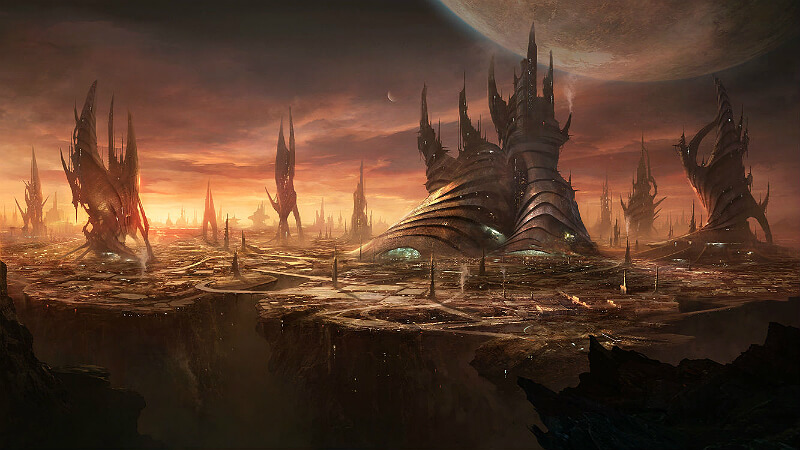Since my last thread, I’ve had a chance to learn even more about how to tackle 2.2. Here’s everything I’ve learned so far:
Quick Tips

- The biggest take away from my last thread: research/alloy/consumer goods jobs cost about 10 minerals per month to your economy. That means you should prepare your economy by getting your minerals about +50/month above where you want them before you add 5 more specialized jobs.
- At the start of games, clear way the slum tile blocker on your homeworld for a quick extra pop.
- Nutritional Plenitude (a food policy choice) is excellent for almost the entire game. I like to activate it a few years into the game, immediately after I settle my first Agri-world, and encourage growth on my homeworld for the first time (after first 1k food.)
- The general consensus among min/maxers is that the best opening Tradition tree is Expansion. You’ll want to pick up the “+10% growth” perk as soon as possible. I usually get it third (starting with the cheaper star station costs.)
- Another (strangely specific) point of consensus is that you should go down the Prosperity tree third. This gives you some leeway to get creative. Strong aggro builds go: Expansion -> Supremacy -> Prosperity. More science oriented builds go Expansion -> Discovery -> Prosperity. If you want to keep your leaders around, or are playing pacifistic, Expansion -> Harmony -> Prosperity isn’t too bad.
- Although it may seem like you can’t directly manage where your pops work, you definitely can: decrease the priority of your pop jobs until your pops decide to work in the desired place. Pops only pick new jobs on creation, unemployment, resettlement, and by forced ousting / preference from priority management. EDIT: Pops can move into new jobs as you re-raise priorities, thus messing up your forced plan for them. You can still mostly get what you want, though.
- Avoid increasing your pop living standards until mid-late game. Consumer goods are hard to produce efficiently early in the game, and you’ll want to avoid needing to do so over better choices.
- You’ll want to spam out “Encourage Growth” non-stop on all of your worlds until you hit the desired size (this is almost never on city worlds, but more on this later.)
- Some jobs aren’t very good, and it’s best to permanently decrease their priority if you can. A great example is Enforcer pops on worlds with a Righteous governor — you’ll be able to squeeze out just that much more efficiency by turning their priority down just before adding more specialist jobs.
- There’s no leader cap in Stellaris anymore. Feel free to spam out a bunch of early scientists, and hand-pick your scientists to roll the right techs, or give you extra % on your current ones.
- Unless you want to exploit the market (I avoid exploits like the plague), you should only use the market for (basically) two reasons:
To fill a temporary hole in your economy while the relevant permanent fix applies (e.g. producing more minerals by swapping out energy districts for mining ones, or producing more consumer goods to match the amount you’re borrowing, etc.)
Once you hit one resource cap, and could really use a boost to another resource (For example: 10k max minerals with +100 minerals/month -> sell 200 minerals a month until you drop down to 5k minerals, then cancel the trade.)
- On the first market use condition, consider getting yourself out of your economic trade deal your short-term goal. This is because, on the whole, (non-exploitative) market use is disadvantageous compared to local production. E.g. If you could turn +20 energy into +20 minerals by swapping some districts around, the market will charge you +40 energy for the same +20 minerals (the numbers aren’t exact, but you get the idea.)
- The best early game techs are the ones that unlock the “+15% resource” buildings — as these are some of the only buildings with no downsides on your Rural worlds. After that, the next best thing to grab is pop growth techs/buildings.
- Generally speaking, mineral production is super important, while stored minerals aren’t terribly important. This is because there’s only so much to spend stored minerals on, while mineral production is the standard by which you can industrialize your economy by producing more consumer goods/research/alloys.
- Resettle pops to your new worlds to speed them straight to 10 pops. This is good for kick-starting worlds, and it’s also great for slowing down your older Rural world growth, as they’ll start to hit overcrowding early if you don’t.
- It’s easy to forget to grow your territory with construction ships — but unless you’re gearing up for war, you should occasionally check back and do this. I personally find that it’s best to have 2-3 Construction ships positioned near the various borders you plan on growing out from. This means that on any one check-in with your construction ships, you can give 2-3 expansion orders instead of just 1-2.
- Generally speaking, NEVER upgrade your ships in 2.2. For some reason, the upgrade cost is ludicrously high right now, sometimes higher than just producing new ships. Just keep adding fresh ships to old fleets and let battle attrition away your old designs.
Planets

The best way to think about planets (that I’ve found) works like this:
There’s two basic types of planets you’ll settle: Rural planets and City planets.
Your City planets are going to draw a ton of resources from your Rural planets, so you’ll want to aim for a ratio of about 2 Rural: 1 City. It’s also important to have about 3 City planets by about 2300, so this means you should aim for at least 9 planets by 2300.
You design Rural planets to maximize raw resource extraction — so they’re best on planets with a lot of resource districts (at least as many as the size of the planet). City Planets are best on large planets (size 18+), as this will give you the city districts you’ll need to develop the planet past the point where you have more than enough pops for all the worker jobs on that world.
This means there’s basically two orthogonal considerations on Rural vs. City planets:
- Increasing size: better for City planets.
- As many or more resource districts than the planet size: better for Rural planets.
This means that occasionally, you’ll find a size 20+ world that is actually better as a Rural planet than a City one.
Now, Rural planets and City planets both diversify into a number of different kinds of archetype worlds:
Rural Planets

There’s generally two things to think about Rural Planets:
A. Where are all the resource districts concentrated?
B. Is it a big planet?
Let’s consider A. first:
I like to label my planets (by putting the tag in front of their names) as follows:
“Agri”: Food / Mineral districts only. This means food districts + mineral districts is greater than or equal to planet size.
“Gen”: Energy / Mineral districts only. This means energy districts + mineral districts is greater than or equal to planet size.
“Rural”: The “everything goes” hybrid / generic rural planet. This means neither “Agri” nor “Gen” applies, almost always because there’s not enough mineral districts on the planet for either sub-categorization condition to obtain. “Rural” planets are almost always, therefore, running all three kinds of districts.
Generally, the first three districts on “Agri” / “Gen” worlds depend on what I need in the short-term. Long-term, however, you should maximize mineral districts on these worlds. “Rural” worlds alone can afford to run fewer than max mineral districts: e.g. maximize food/energy districts, take whatever is left in mining districts.
B. Is it a big Rural planet?
If so, you can usually afford to turn it into what I call “Suburb” planets. “Suburb” planets are those resource-focused Rural planets that can support enough pops to grant you lots of building slots, but the main role of the planet is still to support your City planets. In that case, “Suburb” planets are great for all of the following:
- Exotic refineries to produce exotic resources to feed your City worlds.
- Tier 1 Alloy / Consumer Goods / Research buildings, because your City worlds won’t grow fast enough to support all your high-end resource needs (although they will still support most.)
- Unity producing buildings, because these take up consumer goods that you’ll usually want to ration away from smaller, non-suburb worlds.
Generally, the biggest difference between smaller resource planets (Rural), and larger resource planets (Suburbs) will be the number of city districts you build there. Rural planets should only have 1 or fewer. Suburbs can have 2 or 3.
City Planets

As with rural / resource planets, there’s a lot to think about for your city planets. I usually find there to be two good designs:
- “Forge” planets: Consumer Goods and Alloys
- “Tech” planets: Research
This is usually the best way to layout your buildings because of specialty buildings you get in the mid-game:
“Ministry of Production” — a building you get that boosts Artisan (CG) and Metallurgist (Alloys) output by +15%. This is what makes “Forge” worlds so good, and why — because Forge worlds are usually inadequate at providing all your consumer goods/alloys needs — suburb worlds (mentioned earlier) can pick up the slack with some tier 1 consumer goods and alloys.
“Research Institute” — a building that boosts Researcher output by +15%, in addition to a Science Director job, which is quite potent. This is what makes “Tech” worlds so good — they can stack an enormous amount of tech points on a single planet, with bonuses like a high-level scientist assisting research + the research institute.
A few other tips:
- Generally speaking, I put Gene Clinics on my Suburb worlds and my City worlds, but only upgrade them to Cyto-Revitalization Centers on City worlds. Similarly for Unity buildings – it’s best to only place them on Suburb / City worlds, and only upgrade them on City worlds.
- Resource districts will eventually become obsolete on your City worlds – there will be so many Specialist jobs, every single pop will be a Specialist.
Original Link – Continuation of discussion






Add comment